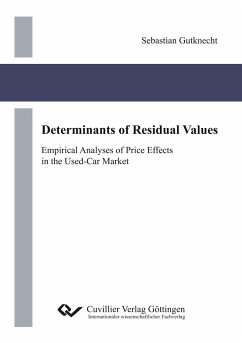
The Challenges of Catastrophe Risk Management: Empirical Analyses in the CAT Bond Market

PAYBACK Punkte
0 °P sammeln!
Due to the increasing relevance of natural catastrophes as a significant global source of risk and the capacity constraints in primary insurance and reinsurance markets, CAT bonds have become an important instrument to manage catastrophe risks by transferring them to the capital market. In three empirical studies, this dissertation examines the challenges related to catastrophe risk management with CAT bonds. First, the factors that influence the substitution of traditional reinsurance by CAT bonds are identified. These factors consist of the insured risk layer and the extends of reinsurer def...
Due to the increasing relevance of natural catastrophes as a significant global source of risk and the capacity constraints in primary insurance and reinsurance markets, CAT bonds have become an important instrument to manage catastrophe risks by transferring them to the capital market. In three empirical studies, this dissertation examines the challenges related to catastrophe risk management with CAT bonds. First, the factors that influence the substitution of traditional reinsurance by CAT bonds are identified. These factors consist of the insured risk layer and the extends of reinsurer default risk, basis risk, and asymmetric information. Second, the accessibility of the CAT bond market for (re)insurance companies is analyzed and the results exhibit the existence of barriers to market entry in the form of higher premiums being paid by less reputable and financially weaker CAT bond sponsors. The third empirical study shows that CAT bond sponsors are susceptible to moral hazard, but also that moral hazard can be successfully prevented by sufficient loss retention or by the use of non-indemnity CAT bonds. Altogether, this dissertation contributes to improving the understanding of the CAT bond market and the challenges of catastrophe risk management using CAT bonds.













